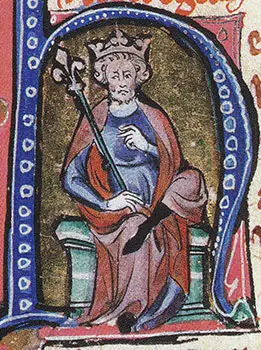Canute The Great
Canute the Great was the king of Denmark, Norway and England. His empire was more commonly known as Anglo-Scandinavian Empire or the North Sea Empire. Interestingly, while he is widely considered one of the most influential English kings, he was Danish himself.
His legacy received serious setback and was lost to history after the Norman Conquest and his heirs’ death within a decade of his own death. However, historians like Norman Cantor think of him as the most effective Anglo-Saxon ruler.


Early Life: Canute was born in 995 AD in Denmark. His grandfather, Harald Bluetooth was the king of Denmark and his maternal grandfather Mieszko I was the King of Poland. At the time of his birth, his father Sweyn Forkbeard was the King of Norway and Denmark. Canute was taught military arts from an early age. His mentor was the famous chieftain and Viking, Thorkell the Tall.
His military training was carried out on the island of Wollin, off the coast of Pomerania. Canute is believed to be very tall and strong. His name came to prominence during his father’s invasion of England in 1013. The invasion was successful and Sweyn Forkbeard became the King of England. However, in a cruel twist of fate his father died the same year and his brother, Harald became King of Denmark.
The English nobility sensing an opportunity, asked Ethelred the former English ruler who was defeated by Sweyn to return and assume mantle. Ethelred quickly gathered forces and defeated Canute’s disjointed army. Canute returned to Denmark and gathered his forces for a re-invasion. In 1015, Canute launched his invasion of England and by October 1016, his invasion was complete with the capture of London after a treaty with Edmund, King of England.
After the treaty, Canute became King of all English territory north of Thames River. As per the agreement, Edmund’s holdings were to be transferred to Canute after Edmund’s death. Fortunately for Canute, the injured English King died within weeks of treaty. With Edmund’s death, Canute became the sole ruler of England.
Canute’s Reign: Canute strengthened his control over England by a series of executions of English nobility and administrative reforms. In 1018, his borther Harald, King of Denmark died. Canute proceeded to Denmark to claim the Danish throne.
He met some resistance but quelled it down. After strengthening his rule in Denmark, Canute returned to England in 1020 AD. He established very good relations with the church and promoted clergy. He is reported by historians as an effective and popular ruler of his time. In 1027, Canute ventured into Scotland with a huge army and secured allegiance of three Scottish kings. In 1028 after returning from Rome, Canute sailed off with fifty vessels to invade Norway.
King of Norway, Olaf Haraldson could do nothing to stop the mighty army of Canute. With this victory, Canute was crowned as the King of Norway as well. He assumed the title of King of England, Denmark, Norway and some of Sweden.

Later Life and Death: Canute is remembered as an influential king. He brought together English and Danish Kingdoms and this benefited both. His control of Baltic Sea route greatly benefited English trade and economy.
He also managed to secure concessions in tolls for English traders from Holy Roman Emperor and other rulers. His efforts to stabilize economy were also instrumental in bringing prosperity. Canute had two wives, Elfgifu of Northampton and Emma of Normandy.
After his death in 1035 AD, his son Harthacnut succeeded him. Unfortunately, death of Harthcnut and his sister Cunigund within a decade of Canute’s own demise resulted in the end of the dynastic rule. After the death of Harthcnut’s death, his half brother Edward the Confessor restored the rule of House of Wessex in England.




